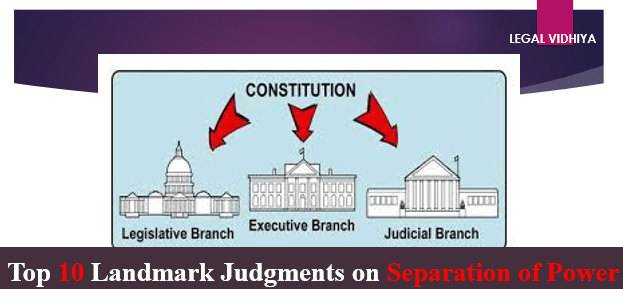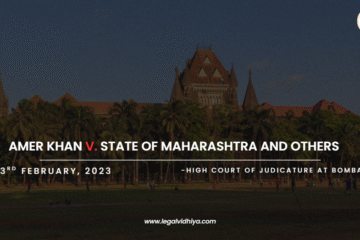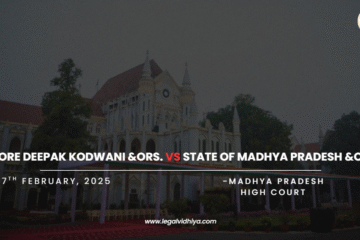
1. Kesavananda Bharati v. State of Kerala (1973):
This landmark case is known for establishing the “basic structure” doctrine, which limits the power of the Indian Parliament to amend the Constitution. The Court held that certain essential features of the Constitution are beyond the reach of amendment. This case was decided by the Supreme Court of India in 1973, is one of the most significant and influential cases in the country’s constitutional history. It revolved around the issue of the scope of amending power vested in the Indian Parliament under Article 368 of the Constitution. The case originated from a challenge to the Kerala Land Reforms Act, which sought to impose restrictions on the management and disposal of property held by religious institutions. Swami Kesavananda Bharati, the head of a Hindu religious mutt (monastery), argued that the Act violated his fundamental right to property. However, the case evolved into a broader constitutional matter: whether there were any inherent limitations on the Parliament’s power to amend the Constitution, and whether certain “basic features” of the Constitution could be immune from amendment. The Supreme Court, in a landmark decision, introduced the “basic structure” doctrine. The doctrine holds that while the Parliament has the power to amend the Constitution, it cannot alter its basic structure or essential features that form the bedrock of the Constitution. The Court did not explicitly define the elements of the basic structure, but it outlined a few features that would fall within its ambit, such as supremacy of the Constitution, rule of law, democracy, separation of powers, federalism, and protection of fundamental rights. Ultimately, the Court upheld the Kerala Land Reforms Act but established the precedent that certain aspects of the Constitution are inviolable. This doctrine has been the foundation for subsequent judgments that assess the validity of constitutional amendments and actions by the government.
2. S.R. Bommai v. Union of India (1994):
In this case, the Supreme Court addressed the misuse of Article 356 (President’s Rule) by the central government to dismiss state governments. The Court ruled that the power should be exercised only in exceptional circumstances, emphasizing federalism and the separation of powers between the center and states. The Bommai case reaffirmed the federal structure of India and established judicial review over the misuse of Article 356. It curtailed the discretionary power of the central government to dismiss state governments at will and emphasized the importance of maintaining a balance between the central and state governments, promoting cooperative federalism.
3. Indira Nehru Gandhi v. Raj Narain (1975):
This case involved the election of Indira Gandhi as Prime Minister and her subsequent disqualification due to electoral malpractice. The Supreme Court’s decision upheld the principle that no one is above the law, reinforcing the separation of powers. This case is a significant legal landmark in Indian constitutional history. It involves the controversial election of Indira Gandhi, the then Prime Minister of India, to the Lok Sabha (the lower house of India’s Parliament) in 1971. Raj Narain, a political opponent, challenged Indira Gandhi’s election on the grounds of electoral malpractices, corrupt practices, and improper use of government machinery during her campaign. The Allahabad High Court found her guilty of electoral malpractices and declared her election void. The court also barred her from holding public office for six years. Indira Gandhi appealed the decision to the Supreme Court of India. While the case was still pending, in a controversial move, she declared a state of emergency in 1975, suspending fundamental rights and centralizing power in the executive. This led to a suspension of the legal proceedings. However, after the emergency was lifted in 1977, fresh elections were held, and Indira Gandhi’s party was defeated. A new government took office, and the Janata Party, which was in power, initiated legal action against her. In 1977, the Supreme Court delivered its judgment in the case, upholding the decision of the Allahabad High Court. This decision marked a significant moment in Indian legal history, emphasizing that no individual, regardless of their position, is above the law. The case highlighted the principle of rule of law and underscored the importance of fair and transparent elections in a democratic system. It also demonstrated the Indian judiciary’s role as a check on executive power and its commitment to upholding constitutional values. The aftermath of this case and the subsequent elections led to a change in India’s political landscape.
4. L. Chandra Kumar v. Union of India (1997):
The Court held that certain classes of cases, particularly those involving fundamental rights, must be heard by judicial tribunals rather than administrative bodies. This case emphasized the independence of the judiciary in upholding the Constitution. The L. Chandra Kumar v. Union of India case is a notable judgment by the Supreme Court of India that deals with the jurisdiction of administrative tribunals and the power of the judicial review of their decisions. The case was decided in 1997. The issue at the heart of this case was whether the jurisdiction of the High Courts under Article 226 (which grants the power of issuing writs for enforcement of fundamental rights) and the Supreme Court under Article 32 (which provides for the right to move the Supreme Court for enforcement of fundamental rights) can be excluded by Parliament when it comes to administrative tribunals. The background of the case involves the establishment of administrative tribunals under Article 323A and Article 323B of the Indian Constitution. These articles allow Parliament to create tribunals for certain specified matters. In this case, the Administrative Tribunals Act, 1985, was passed by the Parliament to establish tribunals for adjudicating service matters of public servants. The Supreme Court held that the power of judicial review, which is a basic feature of the Constitution and an integral part of the rule of law, cannot be excluded from the jurisdiction of the High Courts and the Supreme Court. While Parliament can create specialized tribunals for certain matters, it cannot bar access to the constitutional courts for seeking remedies related to fundamental rights. This decision reaffirmed the authority of the judiciary to review the actions of administrative bodies, ensuring that the fundamental rights of citizens are protected. The case had significant implications for the functioning of administrative tribunals in India and clarified the relationship between these tribunals and the constitutional courts. It underlined the importance of maintaining a balance between specialized adjudication and the safeguarding of constitutional rights.
5. Cooper v. Union of India (1970):
The “Cooper v. Union of India” case refers to the landmark judgment delivered by the Supreme Court of India in 1970. This case highlighted the importance of an independent judiciary. The Court ruled that the executive cannot refuse to comply with a judicial order on the grounds of financial constraints. The case dealt with the issue of executive power and the scope of the executive’s authority in relation to judicial orders. The case arose from a conflict between the judiciary and the executive branch over the implementation of a judgment. The Supreme Court had issued a judgment directing the release of detenues who were held in preventive detention. However, the state government, which was under the control of the executive, did not comply with the court’s order. The question before the Supreme Court was whether the executive could refuse to comply with a judicial order on the grounds of financial constraints. The court held that the executive cannot claim financial constraints as a valid reason for not complying with a judicial order. The court emphasized that the executive is bound to comply with the orders of the judiciary, and financial difficulties cannot be used as an excuse to avoid implementing court orders. The judgment in the Cooper case reinforced the principle of the rule of law and the supremacy of the judiciary in upholding constitutional rights. It highlighted the importance of executive accountability and adherence to the decisions of the courts. The case remains significant in the context of maintaining the balance of power between the executive and the judiciary in India’s constitutional framework.
6. Ram Jawaya Kapur v. State of Punjab (1955):
The “Ram Jawaya Kapur v. State of Punjab” case is a significant judgment delivered by the Supreme Court of India in 1955. The case deals with the scope and extent of executive power and the limitations imposed by the Indian Constitution. The case centered around the interpretation of Article 166 of the Indian Constitution, which pertains to the conduct of government business in the state of Punjab. The question before the court was whether the Governor of Punjab could exercise his powers and functions under Article 166 without the advice of the Council of Ministers. The Supreme Court held that the Governor must exercise his powers and functions under Article 166 on the advice of the Council of Ministers. The Court emphasized that the Governor’s position is not a mere titular head, but an executive authority bound by the aid and advice of the Council of Ministers. This judgment reinforced the principle of parliamentary democracy and the Cabinet system of government, which is a cornerstone of India’s constitutional structure. The case is notable for establishing the principle that executive power must be exercised in accordance with the Constitution and the constitutional scheme, which places a check on the discretionary authority of the executive. The decision in the Ram Jawaya Kapur case reaffirmed the importance of limiting executive power within the boundaries set by the Constitution and parliamentary norms.
7. State of Rajasthan v. Union of India (1977):
In the case of State of Rajasthan v. Union of India (1977), the Supreme Court of India identified two essential grounds that may only be raised when contesting the President’s satisfaction under Article 356 of the Indian Constitution. The reasons are listed as- If the President’s satisfaction has violated certain constitution provisions; The President’s satisfaction is mala fide and wholly based on extraneous grounds.
8. Mohd. Hanif Quareshi v. State of Bihar (1958):
A five-judge panel resolved this case. The petitions contested the killing of certain livestock in Uttar Pradesh, Madhya Pradesh, and Bihar. Three arguments were made against the laws:
1) Muslims were angered by the whole ban because cow sacrifice was permitted on a specific day.
2) This prohibition went against the freedoms that butchers are entitled to under the constitution’s 19(1)(g).
3) A complete prohibition was not in the public’s best interests.
According to the Supreme Court, 1) the complete ban on the slaughter of cattle is legal and in line with the directive principles outlined in Article 48.
2) It was also fair and legal to outright ban she-buffaloes, breeding bulls, and working bullocks if they could be employed as milch or draught animals.
The court stated that there was “no material on the record before us which will enable us to say, in the face of the foregoing facts, that the sacrifice of a cow on that day is an obligatory overt act for a Mussalman to exhibit his religious belief and idea” with regard to the petition’s first ground, which mentioned that cows must be killed on a specific day. We are unable to support this petitioner’s claim given the presumptions. It should be emphasized, nevertheless, that the court did not decide whether a “total ban” was within the purview of the limitations imposed by Article 19 (6).
9. Samsher Singh v. State of Punjab (1974):
“Shamsher Singh v. State of Punjab” is indeed a significant case in Indian constitutional law. The case was decided by the Supreme Court of India in 1974 and is often referred to as the “Bank Nationalization Case.” In this case, the constitutionality of the Banking Companies (Acquisition and Transfer of Undertakings) Act, 1970, was challenged. The Act nationalized 14 major banks in India. The main issue before the Supreme Court was whether the Act violated the right to property guaranteed under Article 19(1)(f) and Article 31 of the Indian Constitution. The Supreme Court held that the right to property is not a fundamental right but a legal right. It can be abrogated or restricted by law, including the sovereign power of the state to acquire or nationalize property. The court ruled that when the state acquires property for a public purpose, it is not required to pay compensation equal to the market value of the property. The case is significant because it reinforced the principle that the right to property is not an absolute right and can be regulated or restricted by the state for public purposes. This judgment provided legal support for the government’s move towards nationalization of banks and other industries for the welfare of the people and the economy.
10. Champakam Dorairajan v. State of Madras (1951):
“Champakam Dorairajan v. State of Madras” is a significant case in Indian constitutional history. The case was decided by the Madras High Court in 1951 and pertains to the issue of caste-based reservations in government educational institutions. Champakam Dorairajan, a petitioner, challenged the caste-based reservation policy adopted by the State of Madras (now Tamil Nadu) in its medical and engineering colleges. The policy reserved a specific number of seats for different castes, which was seen as discriminatory by some non-reserved category students. The Madras High Court ruled that the caste-based reservation policy violated the principle of equality under Article 29(2) and Article 46 of the Indian Constitution. Article 29(2) deals with protection against discrimination and Article 46 focuses on promoting the educational and economic interests of Scheduled Castes, Scheduled Tribes, and other weaker sections. This case is significant because it was one of the earliest cases in independent India where the issue of caste-based reservations and the balance between equality and special provisions for marginalized sections were brought to the fore. However, it’s important to note that this judgment was later overruled by the Supreme Court in the case of “M. R. Balaji v. State of Mysore” (1963), where the Court held that reasonable classification for affirmative action is not discriminatory and is a valid exercise of state power to promote social justice. “M. R. Balaji v. State of Mysore” laid the foundation for the concept of reservations to address historical disadvantages faced by certain sections of society. Subsequently, the Constitution was amended to include Articles 15(4) and 16(4), allowing for reservation policies based on social and educational backwardness.
Manuscript by
Bhavya Arora, LLOYD LAW COLLEGE, Greater Noida, CCSU, Legal Intern at Legal Vidhiya




0 Comments